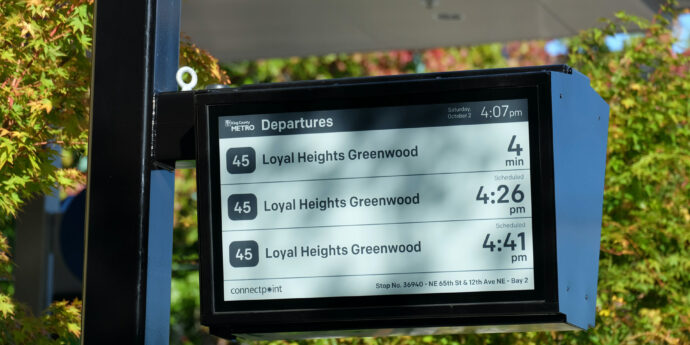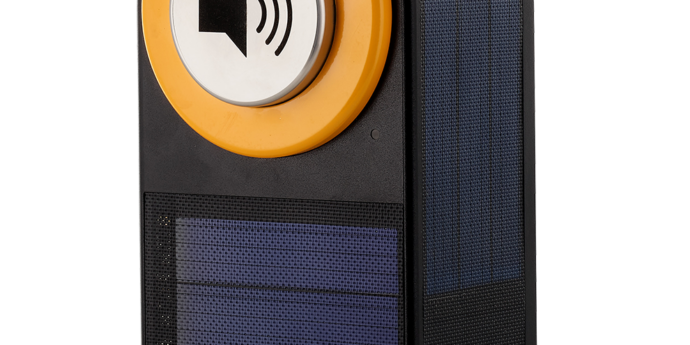

As people and agencies start to focus their efforts towards becoming more environmentally friendly, traditional paper signage is turning into a thing of the past. Data shows that paper signage is wasteful, expensive, and inefficient. Luckily there is a solution to this. Transitioning to digital signage, especially in the public transportation industry. There are many benefits of switching to digital signage, with the main one being its low impact on the environment.
Beyond the fact that using digital signage is much more convenient, it saves the reprinting of hundreds of thousands of paper signs that are needed with each individual service update. Digital signage can be easily updated as often as the user wants with no extra waste or cost. It is also much more flexible and customizable, while being able to provide viewers with real-time updates and alerts. Connectpoint’s digital displays can be remotely managed 24/7 and refresh every minute, giving viewers the most updated and accurate real-time information as possible.
Paper waste was deemed the third largest polluter of air, water, and soil in the U.S. alone, since the process of producing a single ton of paper generates 264 kilograms of air pollution. Although digital signage is replacing paper waste with electricity, they are eco-friendly and ePaper displays can run on solar power. There is no electricity or energy necessary for ePaper displays to hold a message or graphic on the screen. A compelling argument for ePaper signage is to have them run on solar power. All Connectpoint’s ePaper displays give customers the option to choose whether they want solar powered or AC powered displays. Connectpoint’s solar powered ePaper displays can last up to 30 days on a single solar charge while refreshing the screens every minute. This is a big part of how they are so eco-friendly and when using electricity, the digital displays optimize power settings to conserve as much electricity as possible.
Digital signage has developed over the years to become very durable and long lasting. Connectpoint’s displays can last up to 10 years, requiring very little maintenance, making them not only a great environmentally friendly option, but low upkeep as well. In addition to long lasting, digital signage is also reusable. They can be reused in multiple ways, whether that be the sign gets disassembled for parts and reused in other pieces of technology or the actual display being recycled into a new setting with a different information being shown.
Together, solar powered digital signage and public transit are the eco-friendly way to do it when it comes to transportation. Annually, U.S. public transportation saves 37 million metric tons of carbon dioxide and is considered one of the most effective ways to conserve energy. Each time a person decides to leave their car at home and use public transportation, it makes a much bigger difference than one may realize. Public transportation produces 95% less carbon dioxide than a car, significantly decreasing the contribution to global warming.
Using public transportation is one of the best ways for a person to reduce their carbon footprint and thanks to how far technology has come, digital signage makes this much easier than it used to be. With Connectpoint’s solar-powered displays providing real-time information and alerts, the uncertainty is taken out of the process, making public transportation much more desirable to use. These digital displays integrated into the public transportation industry have many benefits beyond the eco-friendly ones, although that is arguably the most important in today’s age.
To learn more about these displays or find the right fit for your agency, contact [email protected].
Share this post

Get connected
Communicate to your customers easily and efficiently.
